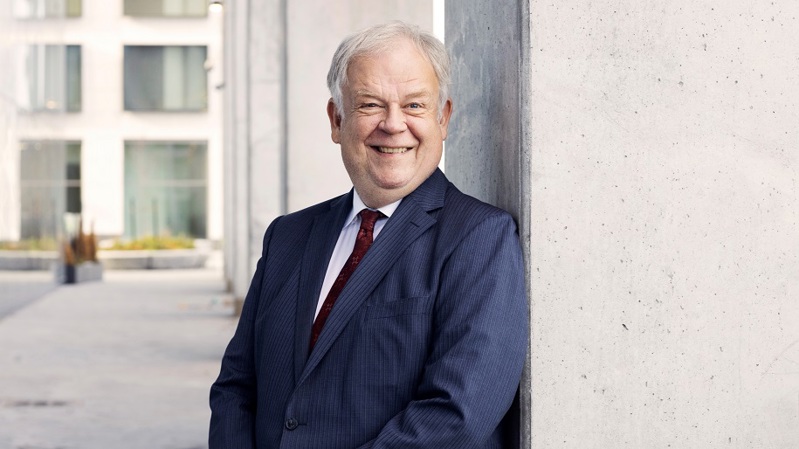Let's reform occupational health together

Laura Karotie, SVP Corporate Health at Terveystalo, shares her initial observations on how occupational health can be developed in a customer-oriented and sustainable manner.

My first month at Terveystalo is coming to an end. I came here from a completely different world – real estate and industrial services – and have enthusiastically immersed myself in occupational health. My new role has brought with it an interesting perspective: I have previously been a user and payer of occupational health services, and now I get to develop the system from the inside.
My first few weeks at Terveystalo have clarified my understanding of the current situation: occupational health has been built up over a long period of time, while the world has changed rapidly. Occupational health now needs customer-oriented reform.
The social value of occupational health is €24 billion
As a customer, the benefits of occupational health were clear to me. Finland has 1.9 million people of working age, most of whom are covered by occupational health services. They have access to smooth, effective primary health care.
One sick day costs an average of €370, and the cost of lost productivity amounts to approximately €24 billion annually. Presenteeism, a situation where an employee is physically present but their work performance and work ability are impaired, costs another.
As we all know, working life has changed: mental health challenges are increasing, the working-age population is declining, and the shortage of skilled workers will affect almost every employer at the latest when the general economic situation begins to recover.
Work continues to cause illness, and occupational diseases occur – which is precisely why preventive occupational health care has been proven to be the most cost-effective form of health care. Work ability must be addressed holistically to ensure that Finland has a sufficient number of healthy workers in the future.
Reform requires dialogue
During my first few weeks, I have already had the opportunity to meet several of our customers and hear their views firsthand. A few common wishes have emerged from these discussions:
- Occupational health needs to be customer-oriented and reformed.
- People want measurable value and cost-effectiveness from occupational health.
- Services and pricing must be clear and transparent.
- Billing should be easy to check and understand.
And I would add one more to the list: dialogue.
In order to build a new generation of customer-oriented occupational health care, we need continuous dialogue. We do not claim to have all the answers – that is why we want to develop solutions together with our customers. Innovation comes from bold experimentation and shared learning.
We build trust by developing our invoicing
Our customers have clear expectations of us. We have taken active steps to meet them. The most significant of these relate to the development of our invoicing.
Unclear charges, individual cases of overcharging, and a lack of price transparency have reduced customer confidence in our invoicing. We are now clarifying our invoicing, and our customers will receive redesigned, easier-to-read invoices at the beginning of the year. We have also strengthened the monitoring of healthcare professionals' invoicing by introducing a new monitoring tool in September.
With these reforms, we now have the most accurate invoicing accuracy monitoring system in the industry at our disposal.
I believe that both improvements will strengthen trust and ensure high-quality service for our customers, and I will support the implementation and monitoring of these changes in my role.
Cost benefits and customer value from technology
Technology is also at the heart of customer-driven renewal. It streamlines processes and enables the creation of measurable value. During my first few weeks, I have had the opportunity to jump on board a fast-moving digital train.
Together with the Swedish company MedHelp, we are currently developing the most modern work ability management platform in the industry, which we will offer to our customers next year. The results in Sweden are promising: seven out of ten companies actively using the platform have reduced sick leave by an average of 13% over the last three years.
Together with Gösta Labs we are building AI-assisted reception listening. AI assistance speeds up work and frees up doctors' time to meet with customers.
Join us in building a new occupational health!
In our plans for 2026, we will further accelerate technological development. I dare say that occupational health will look very different in the near future.
If you would like to join us in considering how occupational health should be reformed, you are warmly welcome to discuss the topic over a cup of coffee – or join our development community. Feel free to contact us, this is an open invitation to discussion!

Laura, Terveystalo's SVP of Corporate Health, is enthusiastic about learning new things and meeting customers in her work. In her free time, Laura gains new experiences by traveling around Finland and abroad with an open mind, and enjoys being able to boldly throw herself into new situations through her children's hobbies, such as taking care of a pony and riding horses.
Read more occupational heatlh blogs

Here are the digital trends in healthcare 2025: AI frees up time and supports quality of care
Ilari Richardt, Director of Digital Services at Terveystalo, highlights five major digital trends that will transform healthcare this year. At the heart of these trends is the potential of artificial intelligence to solve healthcare problems.

Good medicine requires the right tools
Medicine, like many other sciences, is advancing by leaps and bounds. The fact that medicine guides our work means that we deliver the most effective care as recommended. This requires us to constantly evolve and keep ahead of the scientific curve, so that we can act in the best interests of our customers, using all appropriate and possible means.

Occupational health psychologists are underutilized amidst the tsunami of mental health issues
The increase in psychological problems and burnout at work is constantly being discussed. Mental health disorders are one of the major causes of decreased work efficiency, absenteeism, and transition to disability pensions. One might ask why this situation persists, despite the fact that our country has a unique and highly regarded occupational health care system, with a large number of experts in the connection between work and mental health – us occupational health psychologists.

Where there is love for medicine, there is love for humanity
Hippocrates' wise words help us make the right choices. Our commitment to our mission, working for a healthier life, extends beyond the provision of quality health services to the promotion of human rights throughout our value chain.

Together towards a healthier workplace: The power of occupational health partnership
A healthy workplace is the result of collective effort, and Finnish business decision-makers share this view. Customer Relationship Director Terhi Nieminen explains how Terveystalo focuses on proactive measures and multidisciplinary collaboration, supporting the well-being of workplaces and employees comprehensively. This way, we create value that promotes sustainable success and addresses the challenges of the future working life.

How to create a meaningful working life?
Aino Kohtala, a leading psychologist and psychotherapist in one of the Terveystalo regions, points out that although many of the cornerstones of meaningful working life are changing independently of us, everyone has the opportunity to influence the functioning of their work community, the culture that supports their mood and their own and others' well-being.